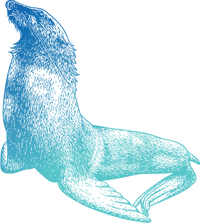In a recent series of blog posts, we described what it’s like to care for the 12,000+ animals that live at the Aquarium and how we aim to provide the best lives possible for them. This post is devoted to the final stage: end-of life care and, when necessary, euthanasia—which means producing a humane death that is rapid, avoids pain and minimizes any distress. While many of the animals in our care die of natural causes, euthanasia is a critical and compassionate element of the care we provide. No animal can live forever, and we want the animals in our care to pass as peacefully as possible when it’s time.

The Seattle Aquarium has carefully developed a comprehensive set of lifelong care and euthanasia policies and protocols as well as quality-of-life assessments to guide the process of determining when humane euthanasia is called for. These policies and protocols are in alignment with the U.S. Department of Agriculture’s Animal Welfare Act and Animal Welfare Regulations, as well as the standards set forth by the American Association of Zoo Veterinarians and the Association of Zoos & Aquariums. They apply to all animals at the Aquarium, from fur seals to sea stars, as well as rescued animals that we care for (such as sea turtles). These decisions are not taken lightly and always involve veterinary and animal care staff.
Emergency euthanasia and planned euthanasia for health and welfare reasons are two categories of humane euthanasia described in the Aquarium’s policy:
- Emergency euthanasia may be the most humane and compassionate choice if an animal is in acute distress and we can’t relieve that distress. An example might be a rescued sea turtle with severe injuries from a boat strike that we can’t fix. These situations are always hard, but we do everything we can to minimize pain and suffering. Fortunately, emergency euthanasia is rare at the Aquarium.
- It’s more common that euthanasia decisions are planned. This is because we monitor our animals closely and usually know when an animal is getting toward the end of its life. This is often due to symptoms that are affecting quality of life and where there are no additional diagnostic, treatment or management options.
“Our harbor seal, Q, was diagnosed with cancer in early 2021,” says Senior Veterinarian Dr. Caitlin Hadfield. “The cancer responded really well to chemotherapy, and he was his normal happy self for several more months. The cancer came back, and we went into what is called rescue therapy. We used his individual quality-of-life assessments, other monitoring and regular discussions with his animal care professionals to help understand how he was doing. We knew that the rescue therapy was unlikely to give him much time, and so we were ready to provide a peaceful euthanasia when we saw signs that he wasn’t thriving.” Q was humanely euthanized in June of 2021.
Regardless of the reason, when euthanasia is deemed necessary, the Seattle Aquarium is committed to always providing appropriate methods that are in the animal’s best interest and that cause the most rapid, painless and distress-free death as possible.
While the decision to humanely euthanize an animal can be emotionally difficult, it’s also one that needs to be made when the situation calls for it—and we’re grateful for the clear policies and protocols, aligned with governing bodies and best practices in animal care, that help guide us.
